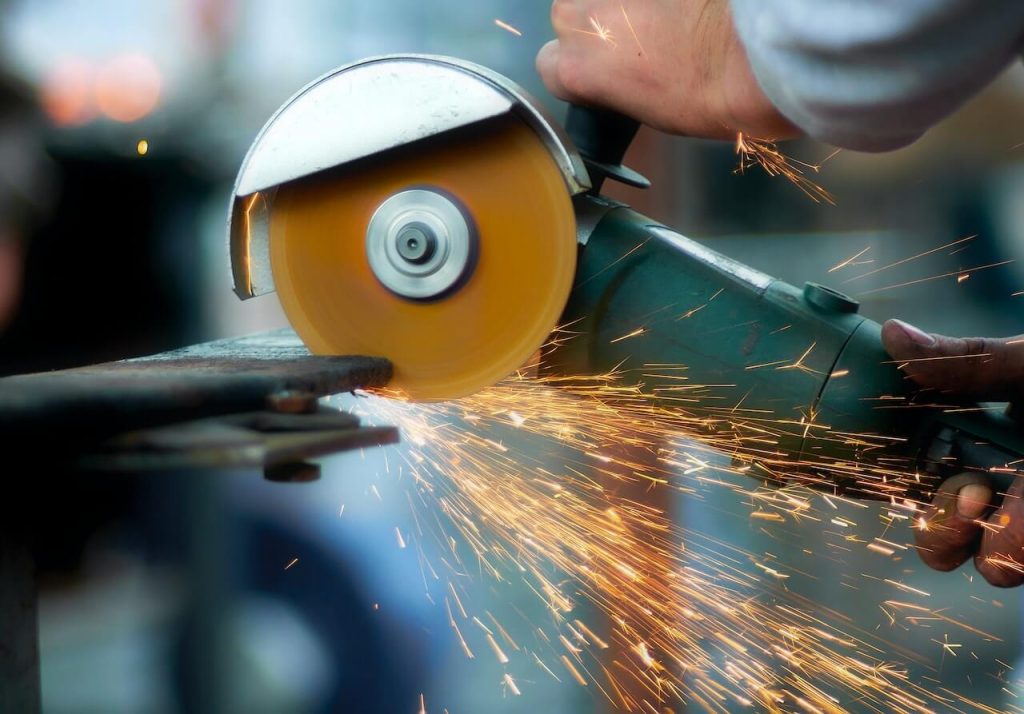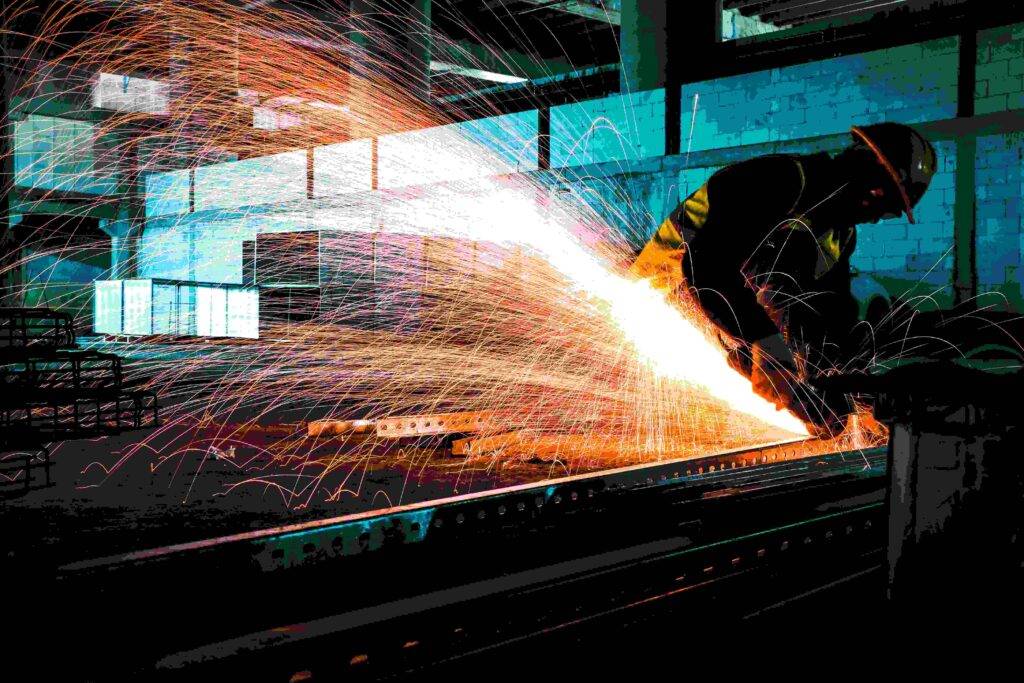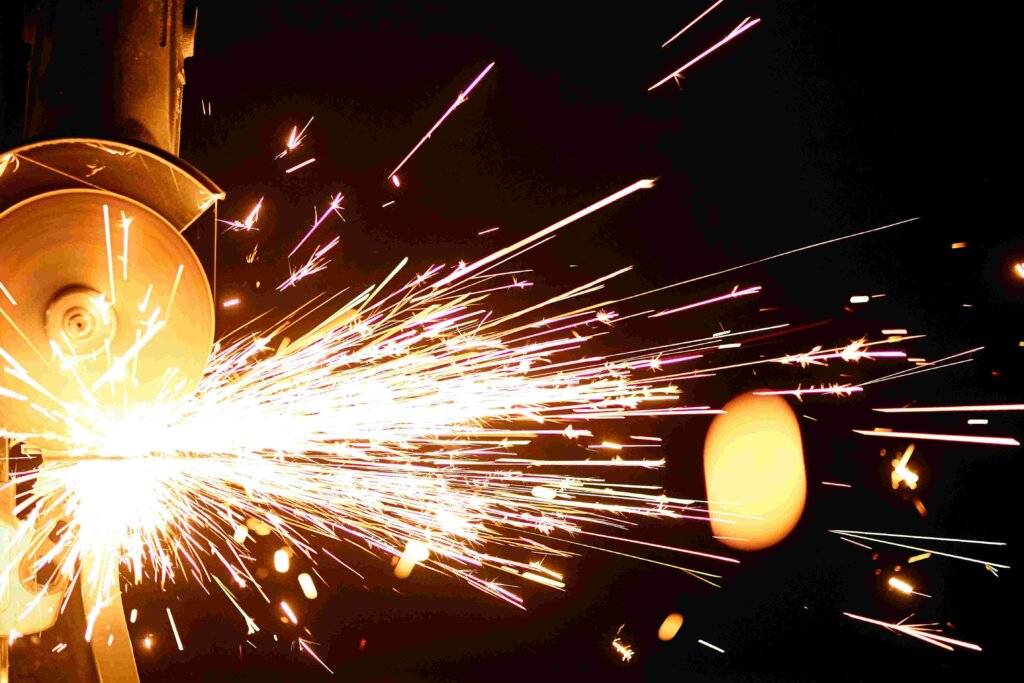Angle grinders are a versatile and powerful tool used for a variety of projects. From cutting and grinding materials to polishing and sanding, angle grinders provide a reliable and efficient way to handle a number of tasks. While angle grinders can be intimidating to use at first, they are actually quite easy to handle when you know what you’re doing. In this blog post, we’ll be discussing how to use an angle grinder safely and effectively, so you can make the most of your tool.
We’ll also be giving you some tips on how to choose the right angle grinder for your project, as well as some helpful safety tips for using your angle grinder. By the end of this post, you’ll have a better understanding of how to use an angle grinder and be confident in your abilities. So, let’s get started!
How to use an angle grinder safely?
An angle grinder is a very useful tool, but it can also be incredibly dangerous. It is important to read the user manual carefully and understand how to use the angle grinder safely. Adhere to all safety guidelines, such as wearing proper protective gear, working in an adequately lit area, and avoiding contact with the spinning wheel or grinding disc.
Always make sure that you are holding the machine securely and keep your body parts away from moving parts so as not to risk injury. Lastly, have an understanding of what material you are grinding and know ahead of time when to take breaks so that you don’t overheat or overuse the grinder.
When using an angle grinder, it’s important to take safety precautions. Always wear goggles, face shields, and hearing protection, and make sure you have proper footing before beginning a cut. Additionally, unplug the angle grinder whenever you change out the blade or switch to a new type of abrasive disk.
Make sure to use the right disk for your project because some disks are designed for tougher materials than others. Finally, keep the angle grinder away from any flammable materials while in use, as sparks can fly and easily ignite them.

How to use an angle grinder to cut metal?
An angle grinder is a powerful tool that can be used to cut metal. It provides a fast and efficient way to make cuts and is perfect for precision jobs. The first step is to make sure your grinder has the correct cutting disc mounted securely to the shaft. Once this is done, position the metal you would like to cut in place and use safety equipment such as gloves, goggles and a strong pair of ear defenders. You should then adjust the guard accordingly for an extra layer of protection against flying particles when you start the grinder.
With both hands firmly on the body of the grinder, you can move it back and forth along the intended line of cut with only light pressure applied at all times. Keep checking your progress regularly until you have finished making your desired cut.
Using an angle grinder to cut metal is a quick and effective way of creating smooth, clean cuts in a variety of metals. When cutting metal with an angle grinder, make sure you have the appropriate safety equipment such as goggles and gloves, and wear long sleeve clothing for added protection. It is also important to accurately measure your cut before beginning in order to ensure accurate results.
Adjust the settings on your angle grinder according to the type of metal you are cutting, using a low speed setting when possible. Secure the workpiece firmly while cutting to prevent the piece from moving.
To begin the cut, angle your arm slightly downwards towards the surface of your workpiece before pressing on the trigger and lightly guiding the disc along in a slow steady motion until you reach your desired depth or length. Release pressure on the trigger when finished and switch off power before removing any remaining pieces or scraps from your workspace.
How to use an angle grinder on concrete?
An angle grinder is a handheld power tool that is used to cut and grind materials like concrete, mortar, tiles and other similar materials. It is important to use caution when using an angle grinder on concrete as its powerful cutting blades can cause serious damage. The safety equipment required for this task includes comfortable clothing, long pants, thick leather gloves and protective eye wear. It’s also important to inspect the blade for cracks or damage before use and ensure that it is attached securely with the correct sized nut.
When grinding large concrete structures such as walls or large structures, it may be beneficial to first use a drill hole in the concrete where you plan to fit the angle grinder so as not to cause any unnecessary damage or flying chunks of material.
Knowing how to use an angle grinder on concrete is an important skill for anyone working in construction or DIY. An angle grinder is a powerful tool that can be used to cut and grind many different materials, including concrete. The first step in using an angle grinder on concrete is to ensure that you have the right safety equipment—you should always wear goggles, a respirator and heavy gloves when using the machine.
Next, select the right diamond cutting disc for your material; choose one with an industrial-grade diamond coating. Secure it firmly onto the spindle of your angle grinder, then test it by briefly running the machine at a low speed before increasing the power to begin cutting or grinding. Make sure you are taking regular breaks and working slowly but steadily for best results—this will keep you safe and protect you from any accidents caused by fatigue or miscalculation.
Operating an angle grinder correctly on concrete requires the right accessories, such as diamond-tipped discs or a high-grade silicon carbide grinding disc. Before use, ensure that the grinder is equipped with the proper guard, and in general wear protective gear such as gloves and safety goggles. For best results, run the angle grinder at a slow speed to allow for more control over the cut. Start grinding by pressing the disc to the surface of the concrete and work from outside edges toward the middle. Finally, finish off with a cleaning and polishing pad for a finer finish.
How to use an angle grinder on wood?
An angle grinder is a powerful tool which can be used to cut, sand, and grind various materials, including wood. When using an angle grinder on wood, it is important to follow safety steps such as wear protective eye wear, use the correct disc for the material you’re cutting/grinding, and ensure that your workspace is well lit and organized. It is also important to start with slow motion when operating the angle grinder on wood and increase the speed as you become more comfortable. Additionally, never hold a work piece with hands while still in contact with the grinding disc and make sure to keep hands away from spinning parts of the angle grinder.
Using an angle grinder on wood can be a bit tricky, but with the right technique it can be done safely and effectively. First of all, you need to make sure that your angle grinder has a grinding wheel that is specifically rated for use on wood. You should also select an appropriate grit size that is suited for the particular material you are working on. Once you have these things set up, start by clamping your workpiece securely and covering the area with a shop rag for protection. Then, using steady presses, begin grinding away at the surface in small consistent passes using side-to-side or circular motions. When finished remove any remaining dust residue before inspecting your workpiece for smoothness and overall look.
How long can you use an angle grinder?
Generally speaking, an angle grinder can be used as long as its mechanical parts remain in working condition and regular maintenance is done on the tool. Depending on the frequency of use, the type of material being cut, and other factors such as dust from the grinding process, an angle grinder may last for a few years if all necessary care is taken. Additionally, higher quality tools with better engineering and more robust materials will tend to last longer than lower quality models.
The amount of time you can use an angle grinder for typically varies based on the model and its intended use. Generally speaking, an angle grinder used for basic jobs such as cutting or grinding tile and metal may last anywhere from 10-30 minutes. Angle grinders developed to sustain a tough construction application may reach one hour or more of continuous operation time. Exceeding the suggested duty cycle recommended by the manufacturer may cause overheating and will shorten the life of your angle grinder. In order to prolong the lifetime of your tool, make sure to follow safety guidelines and do proper maintenance whenever needed.
Angle grinder cutting direction
When using an angle grinder for cutting, it is important to pay attention to the direction of the cut. When cutting with a right-handed grinder, you should work in a counter-clockwise motion; when using a left-handed grinder, you should move clockwise. Additionally, when using discs designed for cutting, they are meant to be used on their flat surface.
Making contact at an angle or upside down may reduce their life and cause them to break under pressure. It is also important to keep the spinning disc below the level of your grip or rest your hand on something so that no loose articles can enter the grinding area. Following these directions will help ensure your safety while using an angle grinder.
The proper cutting direction when using an angle grinder is to apply the grinding disc from the left side of the material to be cut. An angle grinder should always be tested against a scrap piece of material before trying it on the actual project and held with two hands for utmost safety. The speed of each grind should also be slow and steady, otherwise there may be kickback if too much pressure is applied. Also, protective gear like goggles should always be worn prior to use.
How to hold an angle grinder?
When using an angle grinder, it is important to hold it in the proper way in order to avoid accidents. In general, you should always wear protective gloves and use two hands – one to hold the power tool and one to hold the grinding or cutting disc. Additionally, keep your body away from the path of the sparks produced during grinding. Additionally, make sure that you are standing on a steady surface when using an angle grinder so that you don’t accidentally trip over yourself while using the tool.
Holding an angle grinder properly is essential for safe operation. Begin by having the tool off, then grip the back handle of the angle grinder with one hand and position your other hand on the support handle. Press down lightly on the tool to steady it during operation and be sure to maintain good footing for stability. Angle grinders should never be used when standing on a ladder or any other unstable surface. Use light pressure when using this power tool and keep both hands firmly gripping the handles until it stops completely.
Finally, before you begin each project, inspect the grinding disc to make sure that it is in good working order – replace any broken or damaged discs immediately prior to use.
To safely hold an angle grinder, make sure that your fingers are in the molded handle. Place the side of the grinder against the material you’re cutting or grinding and then use both hands to grip the handles tightly. When turning on the tool, press down firmly using your dominant hand to start the tool again and keep a firm grip with your other hand as it starts to spin. Make sure you always wear safety glasses, as well as ear protection whenever you use an angle grinder. Additionally, when doing any cutting, stand away from the material so that sparks and debris cannot fly towards you.

How to use an angle grinder for sanding?
An angle grinder is a great tool for sanding, especially in areas that are either too large or too difficult to reach with other tools. Using an angle grinder properly requires safety precautions to ensure a smooth, even result and avoid injury. Start off by making sure the area you’re sanding is well-ventilated, as to reduce dust particles from becoming airborne. Securely attach the sanding disc to your angle grinder. Hold both handles while pressing the trigger firmly. Slowly move your angle grinder back and forth over the area that needs to be sanded.
Keep in mind not to apply pressure on the surface in order for the disc to spin evenly on its own–the more downward motion can make polished marks appear on the surface. Finally, when finished, turn off your machine before removing the disc finish up with a clean cloth.
In order to successfully use an angle grinder for sanding, you will need to have both the right type of grinder and the appropriate sanding discs. A 4-in. or 4 1/2-in. grinder is usually best suited for this task and it should be equipped with an adjustable guard. When choosing a disc, always opt for coarse-grit varieties designed specifically for sanding; these will enable you to remove material quickly and effectively. As you work on a particular surface, make sure to start at faster speeds and then slowly reduce them as necessary to keep the tool under control and minimize any risk of cuts or sparks.
FAQs (Frequently Asked Questions)
What is the main use for an angle grinder?
An angle grinder is a handheld tool that is primarily used for grinding down or thinning metal and stone. It works by rotating abrasive particles at high speed to smooth out surfaces, usually as part of grinding and polishing operations. Angle grinders also can be used to make cuts in materials, including wood, plastic, and even brick and concrete. Additionally, they can be used to sharpen blades and even remove paint from surfaces.
What Cannot be cut with an angle grinder?
An angle grinder is a very versatile tool that can be used to cut through all types of material, but not everything. For example, it cannot be used to cut through armor plating or reinforced concrete. Additionally, an angle grinder should not be used on combustible materials such as PVC pipe, because the sparks and friction could render these materials flammable. Finally, there are certain metals such as stainless steel and aluminum which require the use of special cutting discs in order to prevent the material from warping or fusing with the blade.
Do you push or pull an angle grinder?
An angle grinder is a handheld power tool that is designed to cut, grind and polish metal pieces. It is generally used when grinding or cutting metal from bars and sheets. When using an angle grinder, operators should always push the grinder in a forward direction. If the operator pulls on the grinder, this could cause a fatigue fracture on the shaft of the grinder. Additionally, slippage can occur if a user does not use enough force to keep the abrasive material pressed firmly against the surface being worked on.
The Different Types of Angle Grinder Wheels



